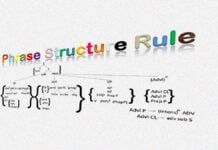Listening effectively is crucial in all aspects of life, fostering communication, understanding, and connection. However, numerous barriers can impede our ability to hear and absorb what others are saying honestly. These barriers often fall into psychological, physical, emotional, linguistic, and socio-cultural categories.
Psychological Barriers
Psychological barriers are related to mental factors that affect the process of listening. These include preconceptions, mental distractions, or biases that can lead individuals to misinterpret or dismiss what is being said. Pre-existing beliefs, attitudes, and expectations can filter or distort what we hear, leading us to selectively listen to information that confirms our beliefs (confirmation bias). Stress, mental fatigue, or a lack of focus can impede our ability to process and understand the content.
- Preoccupation: Mental preoccupation with personal concerns or issues can divert attention from the speaker’s message.
- Selective Listening: Focusing only on information that aligns with one’s beliefs or interests can limit overall comprehension.
- Defensiveness: Feeling defensive or resistant to the speaker’s message may lead to a lack of receptivity.
Physical Barriers
Physical barriers are obstacles related to the environment or the listener’s physiological condition. Hearing impairments, physical discomfort, or environmental factors such as noise pollution, poor acoustics, or even the physical distance between communicators can impede one’s ability to hear clearly and focus on the message.
- Noise: Environmental noise, whether internal or external, can interfere with the ability to hear and understand the speaker.
- Poor Acoustics: Inadequate room design or acoustics may contribute to difficulty hearing and processing spoken information.
- Distance: Being physically distant from the speaker may make picking up on non-verbal cues and nuances challenging.
Emotional Barriers
Emotional barriers involve feelings and emotions that impact the listener’s receptivity and understanding. The listener’s emotional state can significantly affect listening efficiency. If a person feels anxious, upset, or angry, their emotional arousal can interfere with the cognitive processes required for attentive listening. Personal issues or moods can overshadow the attention and understanding that effective listening requires. Emotional responses to the topic or speaker can also block effective listening.
- Stress: High stress or anxiety levels can impair concentration and hinder the ability to focus on the speaker’s message.
- Bias: Pre-existing biases or negative emotions toward the speaker can create a barrier to objective listening.
- Empathy Deficit: Lack of empathy or emotional connection with the speaker may hinder understanding and responsiveness.
Linguistic Barriers
Linguistic barriers are related to language differences and communication styles. Discrepancies between the speaker’s and listener’s language proficiency, accents, dialects, or use of jargon can lead to misunderstandings. Listeners may also struggle when the speaker’s language is overly complex or too technical for their level of comprehension.
- Language Proficiency: Differences in language proficiency can result in misunderstandings and misinterpretations.
- Jargon: Using technical or specialized language that the listener is unfamiliar with can create confusion.
- Cultural Differences: Variations in cultural communication norms and expressions may impact comprehension.
Socio-cultural Barriers
Socio-cultural barriers stem from differences in cultural backgrounds, values, and societal norms. Different cultural backgrounds can affect listening through varying communication styles, expectations, and interpretations of verbal and nonverbal cues. Cultural norms might dictate whether it is appropriate to make eye contact, interrupt, or react in certain ways, and these norms can differ markedly between cultures, sometimes resulting in miscommunication.
- Non-Verbal Cues: Different cultures may interpret non-verbal cues and body language differently, leading to misunderstandings.
- Communication Styles: Varied preferences for direct or indirect communication styles can affect the effectiveness of the message.
- Gender and Age Differences: Variances in communication expectations based on gender or age may influence how messages are received.
Overcoming Barriers
Overcoming barriers to listening often involves consciously engaging in active listening, managing personal biases and emotional responses, and seeking clarification when necessary. Creating an environment conducive to effective listening and fostering open, respectful dialogue can also help minimize these obstacles.
Active Listening: Actively listen by providing feedback, asking questions, and demonstrating interest.
- Cultural Competence: Develop an understanding of diverse cultural communication norms to enhance cross-cultural communication.
- Self-Awareness: Recognize and manage personal biases, emotions, and distractions that may impede effective listening.
- Clarification: Seek clarification when faced with unclear language or content, ensuring a shared understanding.
- Environment Management: Control the physical environment to minimize noise and distractions, creating an optimal listening space.
Understanding and addressing these barriers can enhance effective listening skills, fostering more precise communication and better interpersonal relationships.





























